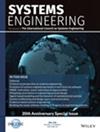过程安全管理实施指南
IF 1.6
3区 工程技术
Q4 ENGINEERING, INDUSTRIAL
引用次数: 0
摘要
摘要:文献中缺少如何实施过程安全管理(PSM)的一般指南。本文提供了实施PSM的一般程序,不发达国家、发展中国家和发达国家的任何行业都可以采用该程序开始实施PSM。PSM的实施可以通过提议的框架开始,包括四个步骤:(1)PSM引入,(2)分配部门明智的PSM职责,(3)培训和(4)审计和改进。培训包括使用What‐If/HAZOP综合分析的过程危害分析(PHA),使用ALOHA或等效软件的定量风险评估,PSM表格开发和其他培训。在一个案例研究中,氨释放是估计和量化使用ALOHA。为实现PSM,需要开发9种不同形式的PSM。应该安排各种培训,包括具体的学习成果,本文讨论的例子很少。为任何实施PSM的新行业提出了审计方案。讨论了PSM要素的实现顺序。新建立的行业可以采用该程序按照建议的形式和顺序实施PSM,这可以帮助工程师理解PSM的实施。该PSM实施建议框架正在化肥行业和烧碱行业实施。本文章由计算机程序翻译,如有差异,请以英文原文为准。
Implementation guide for process safety management
Abstract A general guide how to implement process safety management (PSM) is missing in the literature. This article provides general procedure to implement PSM which any industry in underdeveloped, developing and developed countries can adopt to start PSM implementation. PSM implementation can be initiated through the proposed framework consisting of four steps: (1) PSM introduction, (2) Assigning departmental wise PSM duties, (3) Trainings and (4) Audits and improvements. Trainings include process hazard analysis (PHA) using Integrated What‐If/HAZOP analysis, quantitative risk assessments using ALOHA or equivalent software, PSM forms developments and other trainings. In a case study, ammonia release is estimated and quantified using ALOHA. Nine various forms for PSM are required to be developed for industry implementing PSM. Various trainings should be arranged including specific learning outcomes and few examples are discussed in this article. An audit scheme is proposed for any new industry implementing PSM. PSM elements implementation sequence is discussed. New established industries can adopt this procedure to implement PSM following suggested forms and sequences, which can help engineers in understanding PSM implementation. This PSM implementation proposed framework is being implemented in the fertilizer industry and caustic industry.
求助全文
通过发布文献求助,成功后即可免费获取论文全文。
去求助
来源期刊

Systems Engineering
工程技术-工程:工业
CiteScore
5.10
自引率
20.00%
发文量
0
审稿时长
6 months
期刊介绍:
Systems Engineering is a discipline whose responsibility it is to create and operate technologically enabled systems that satisfy stakeholder needs throughout their life cycle. Systems engineers reduce ambiguity by clearly defining stakeholder needs and customer requirements, they focus creativity by developing a system’s architecture and design and they manage the system’s complexity over time. Considerations taken into account by systems engineers include, among others, quality, cost and schedule, risk and opportunity under uncertainty, manufacturing and realization, performance and safety during operations, training and support, as well as disposal and recycling at the end of life. The journal welcomes original submissions in the field of Systems Engineering as defined above, but also encourages contributions that take an even broader perspective including the design and operation of systems-of-systems, the application of Systems Engineering to enterprises and complex socio-technical systems, the identification, selection and development of systems engineers as well as the evolution of systems and systems-of-systems over their entire lifecycle.
Systems Engineering integrates all the disciplines and specialty groups into a coordinated team effort forming a structured development process that proceeds from concept to realization to operation. Increasingly important topics in Systems Engineering include the role of executable languages and models of systems, the concurrent use of physical and virtual prototyping, as well as the deployment of agile processes. Systems Engineering considers both the business and the technical needs of all stakeholders with the goal of providing a quality product that meets the user needs. Systems Engineering may be applied not only to products and services in the private sector but also to public infrastructures and socio-technical systems whose precise boundaries are often challenging to define.
 求助内容:
求助内容: 应助结果提醒方式:
应助结果提醒方式:


